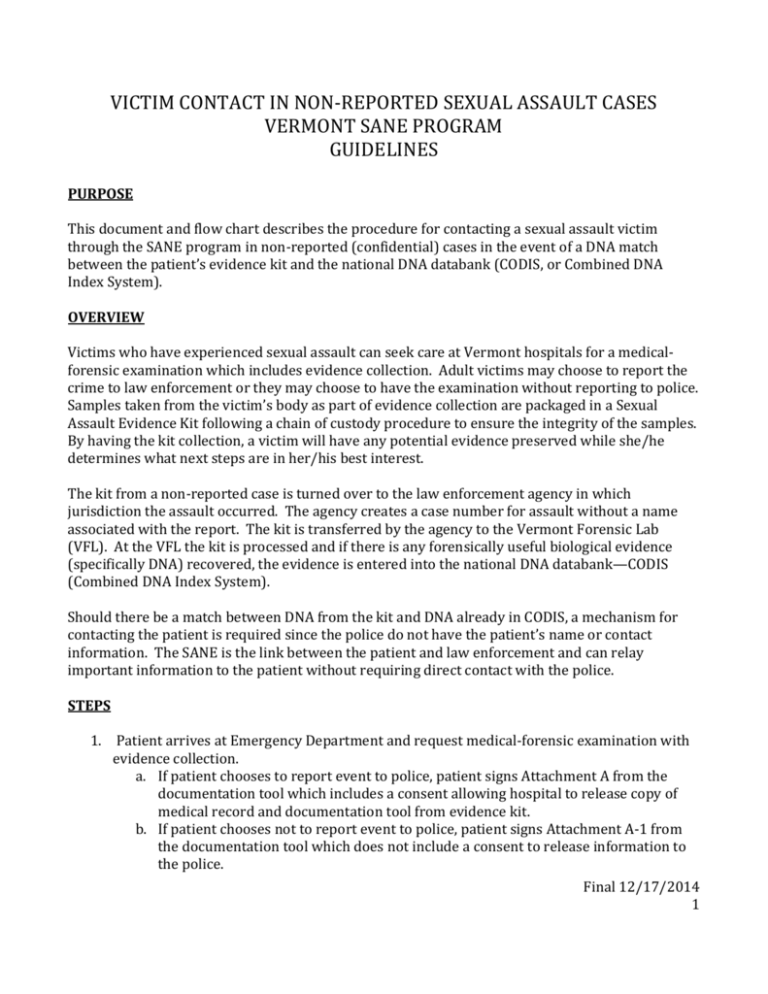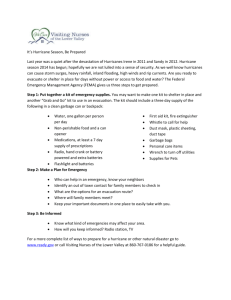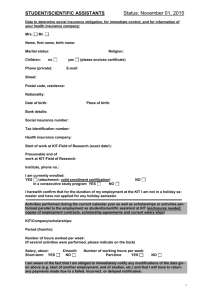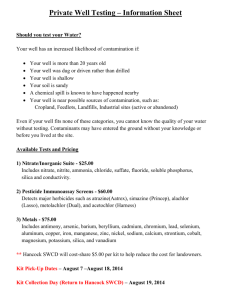
VICTIM CONTACT IN NON-REPORTED SEXUAL ASSAULT CASES
VERMONT SANE PROGRAM
GUIDELINES
PURPOSE
This document and flow chart describes the procedure for contacting a sexual assault victim
through the SANE program in non-reported (confidential) cases in the event of a DNA match
between the patient’s evidence kit and the national DNA databank (CODIS, or Combined DNA
Index System).
OVERVIEW
Victims who have experienced sexual assault can seek care at Vermont hospitals for a medicalforensic examination which includes evidence collection. Adult victims may choose to report the
crime to law enforcement or they may choose to have the examination without reporting to police.
Samples taken from the victim’s body as part of evidence collection are packaged in a Sexual
Assault Evidence Kit following a chain of custody procedure to ensure the integrity of the samples.
By having the kit collection, a victim will have any potential evidence preserved while she/he
determines what next steps are in her/his best interest.
The kit from a non-reported case is turned over to the law enforcement agency in which
jurisdiction the assault occurred. The agency creates a case number for assault without a name
associated with the report. The kit is transferred by the agency to the Vermont Forensic Lab
(VFL). At the VFL the kit is processed and if there is any forensically useful biological evidence
(specifically DNA) recovered, the evidence is entered into the national DNA databank—CODIS
(Combined DNA Index System).
Should there be a match between DNA from the kit and DNA already in CODIS, a mechanism for
contacting the patient is required since the police do not have the patient’s name or contact
information. The SANE is the link between the patient and law enforcement and can relay
important information to the patient without requiring direct contact with the police.
STEPS
1. Patient arrives at Emergency Department and request medical-forensic examination with
evidence collection.
a. If patient chooses to report event to police, patient signs Attachment A from the
documentation tool which includes a consent allowing hospital to release copy of
medical record and documentation tool from evidence kit.
b. If patient chooses not to report event to police, patient signs Attachment A-1 from
the documentation tool which does not include a consent to release information to
the police.
Final 12/17/2014
1
(The remainder of this outline refers to non-reported cases)
2. After the patient has been examined and cared for, evidence kit is sealed
a. A mark is made on the “not reported” check box on the front of the box
b. A large “X” is made in the check box square on the red sticker which says, “If this box
is checked, this is a Confidential/Non-Reported Kit. Do not contact the patient
directly. For communication about this kit, contact the SANE coordinator at
802.223.1302 X 111.”
c. The kit is placed in a secure place following a chain of custody procedure and police,
in which jurisdiction the assault occurred, are called to pick up the kit and transport
it to the VFL.
3. The police department creates a case number for the kit and documents the kit number,
then transports the kit to the VFL.
4. The VFL accepts the kit and examines the kit according to their procedures.
5. If suspect DNA is discovered, the VFL enters this information into CODIS and sends a report
to the law enforcement agency notifying them of the finding. The reporting form has the
same language as the kit regarding contacting the patient.
6. If there is a match in CODIS another report is generated by VFL to the police informing
them of this information and with the same language regarding contacting the patient.
7. The police contact the SANE Program where the examination took place. They provide the
kit number and the date of the examination and/or the date of the assault.
8. The SANE Program looks up the kit number and matches it to the patient’s medical record
number. With this information, they can look up the patient’s demographics and call the
patient.
a. Contact with the patient could happen months or years after the original
assessment. Care must be taken to protect the patient’s privacy and the SANE must
anticipate that the patient may need some support when receiving this information.
b. The SANE reviews that DNA found in the kit matches a person on the national DNA
databank.
c. The SANE explains that the police would be interested in speaking to the patient
regarding this information and the previously unreported case.
d. Police contact information is given to the patient.
e. The patient can choose to make contact with the police or choose to remain
anonymous.
f. Contact information for local advocacy group should be given to the patient.
Final 12/17/2014
2
arrives
at hospital
afterthe
possible sexual assault.
Patient chooses to have aPatient
forensic
kit done,
but to keep
kit confidential.
Sticker on the Kit reads: “If this box is checked, this is a
Confidential/non-reported Kit. Do not contact the patient
directly. For communication about this kit, contact the SANE
coordinator at 802.223.1302 x111”
Patient chooses to
have a forensic kit
done, but NOT to
keep the kit
confidential.
Police transfer the kit to the crime lab. Police should not see
the contents of the kit. A case number is created based on
the police jurisdiction where the assault occurred.
Lab gives the case a #, but the Victim’s personal information
is not affiliated with the kit.
Kit is examined for biological evidence.
If NO biological evidence is
found, kit is returned to
sending police department
and patient will never be
contacted regarding the kit.
If biological evidence (DNA) IS found, DNA is run through
CODIS. Kit is returned to sending police department.
If and when there is a DNA match in CODIS (immediate or
delayed)
Victim will
never be
contacted.
The VFL contacts the “responsible officer” for the case.
Officer reads KIT sticker, contacts SANE Coordinator who
provides guidance for contacting SANE
SANE matches kit number with medical record number and
makes contact with patient if able. SANE explains CODIS
match and provides law enforcement contact information so
that patient can make contact with them if she/he chooses.
SANE provides advocacy information to patient.
Final 12/17/2014
3







